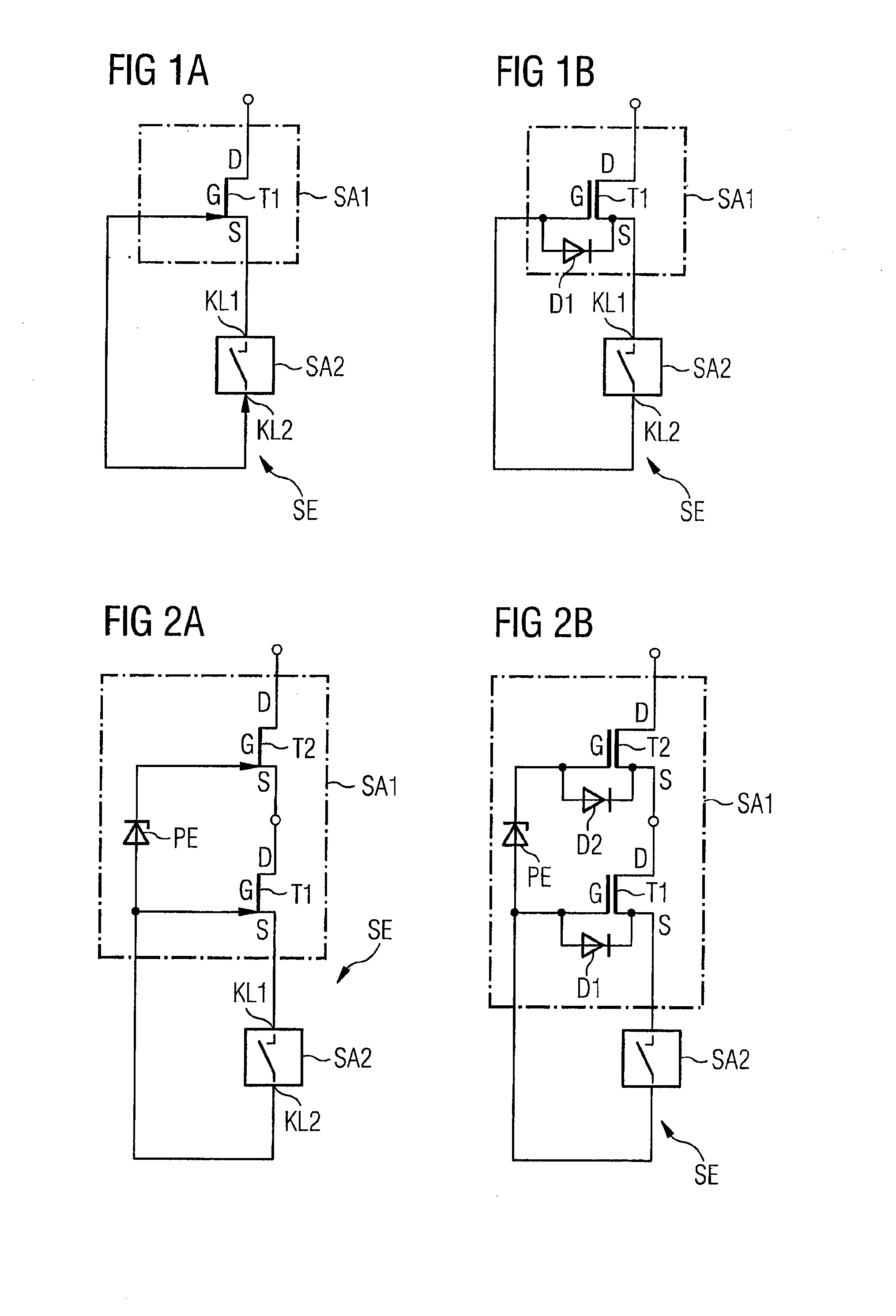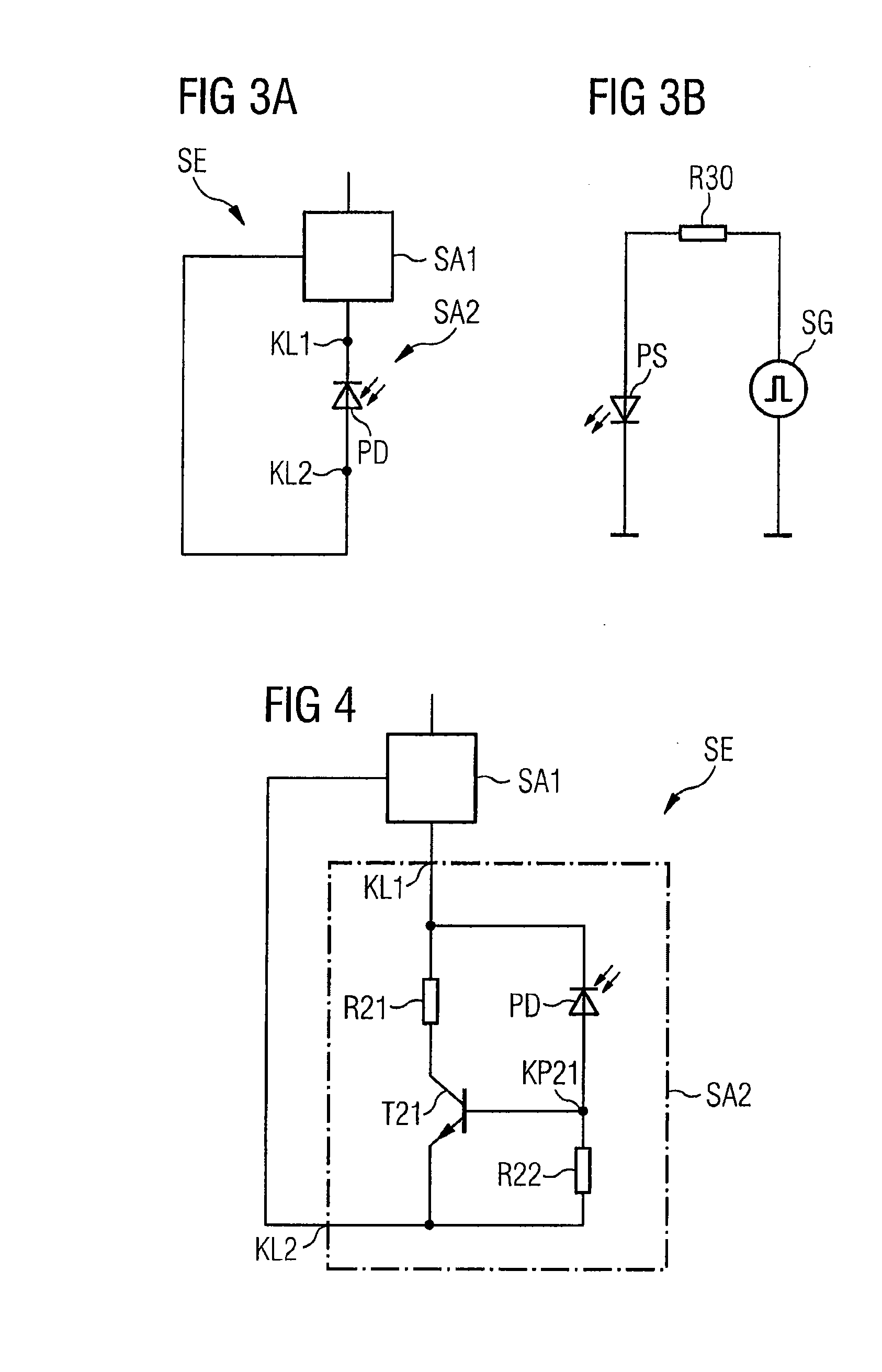Switching device and switching arrangements for switching at high operating voltage
a high-operational voltage, switching device technology, applied in the direction of pulse automatic control, pulse manipulation, electrical apparatus, etc., can solve the problems of increased costs, inability to use the switching device in those applications, and steps in the switching-on of the serially wired high-voltage switching elements, so as to reduce the loss of transfer
- Summary
- Abstract
- Description
- Claims
- Application Information
AI Technical Summary
Benefits of technology
Problems solved by technology
Method used
Image
Examples
Embodiment Construction
[0035]FIGS. 1A and 1B show a switching arrangement SE. The switching arrangement SE includes a first switching device SA1, which is wired in series with a second switching device SA2.
[0036]The switching device SA1 has a single self-conducting switching element T1, which in FIG. 1A is a JFET. The JFET has a control connector (gate connector), a first main connector (drain connector D) and a second main connector (source connector S). The gate connector G of the JFET T1 is, at the same time, the control connector of the first switching arrangement. The source connector S of the JFET T1 is the second main connector of the switching arrangement. If, as in the exemplary embodiment of FIG. 1A, the first switching arrangement SA1 only has a first switching element, the drain connector D of the JFET forms the first main connector of the first switching arrangement SA1.
[0037]The switching device in FIG. 1B differs from the switching device of FIG. 1A in that the JFET has been replaced by a M...
PUM
 Login to View More
Login to View More Abstract
Description
Claims
Application Information
 Login to View More
Login to View More - R&D
- Intellectual Property
- Life Sciences
- Materials
- Tech Scout
- Unparalleled Data Quality
- Higher Quality Content
- 60% Fewer Hallucinations
Browse by: Latest US Patents, China's latest patents, Technical Efficacy Thesaurus, Application Domain, Technology Topic, Popular Technical Reports.
© 2025 PatSnap. All rights reserved.Legal|Privacy policy|Modern Slavery Act Transparency Statement|Sitemap|About US| Contact US: help@patsnap.com



